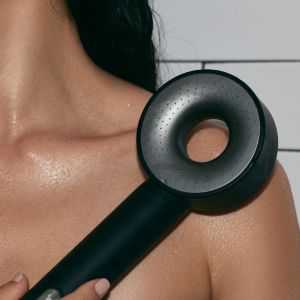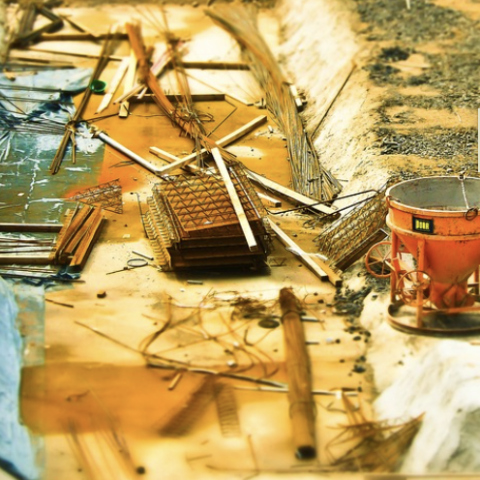Talent Better
By Adlin Pinto
We all understand that skills can be taught, but raw talent, drive, and a good work ethic is ultimately a winning combination. Yet someone with raw talent may well be naturally good at something, but has not as of yet, developed their abilities; more often than not they need a ‘guiding hand’ and a ‘step up’ to make it further in becoming a true professional. One key part of the new generation of talents coming through education now is that many if not most are looking to train their talent and help the world at the same time. Read about it here is Talent Better.
So, are you a young creator with a dream and design ideas for a better tomorrow. Do you have designs that can inspire the world are you willing to showcase it to the world and get recognised? If so then there is a very well-respected internationally recognised platform for new designers. It is called the Lexus Design Awards which encourages young creative talents from around the world. The Competition is open to any young talent across the design arena from any part of the world. So it is truly an open global playing field.
Established in 2013, the Lexus Design Award is a global international design competition. Each year the brand puts forward a theme for those entering to work with, along with the key attributes that sit with the brand; ones the align with its design philosophy. This years’ theme is Design For A Better Tomorrow.
Lexus is a global luxury automotive brand with a commitment to bold, uncompromising design, and craftsmanship. The three key principles of the Lexus brand: Anticipate- a challenge of the future, Innovate- address the challenge with an innovative solution, and Captivate- the imagination with exceptional design.
This competition helps to foster future careers. It provides a unique opportunity for the six finalists to work with a world-recognised designer as a mentor so that together they can make a model of the design the young participate entered into the competition.

Trophy designed by Hideki Yoshimoto
This year the competition had 2000 entries from 79 countries with six applicants who were selected as the top finalists with the ultimate winner being chosen from these. The finalist’s concepts and designs featured a diverse range of innovative, craftsmanship, techniques, materials, and application, with an emphasis, on course, on design that leads to a better tomorrow.
The competition was judges by a group of industry professionals Jeanne Gang (founder of renowned architecture and urban design practice Studio Gang), John Maeda (American designer, technologist and author), Paola Antonelli (Senior Curator of Architecture and design), and Simon Humphries (Head of Toyota and Lexus global design).
The six finalists this year that really stood out for the judges and were from across many areas of the globe with many different design ideas and they were:-
Biocraft Designer: Sutherlin Santo, USA
Biocraft materials combine natural biopolymers with emerging technology to produce materials with advanced capabilities that better health and the environment. All within a stool to sit on. These work to replace the inert products in our daily lives with ones that actively engage with their surroundings by removing C02 from the air and disseminating nutrients. A type of breathing machine to aid healthier air.

Feltscpape Designers: Théophile Peju & Salvatore Cicero, France/Italy
Feltscape is a breathing cloud that fosters the philosophical idea of isolation. It is made of felt and recycled bio-plastic with an innovative robotic fabrication process. By the implementation of sensors and kinetic mechanisms, the cloud will follow the user’s breath. The membrane rhythm gradually accelerates or decelerates guiding the occupant to inhale/exhale slower. Another aid to help with breathing well.

Flashpak Designer: Yaokun Wu, China
Flash Pak, is a type of lifejacket that is installed on a lampost, making life jackets easily accessible and providing protection to people in high-risk flooding areas. A grab and go product for high-risk flood plains.

L.I.C.K Designer: Irina Samoilova, Russia
L.I.C.K. is a portable body cleaner that will help people who are unable to use a bath or have access to only a little or no water. The device has a soft cleaning surface like a cat’s tongue similar to how cats clean their body from impurities. A great multi-functioning cleaning device.

Pursewit Designer: Aqsa Ajmal, Pakistan
The Pursewit is a sleek new design that just invites you to sew and makes the cumbersome process of sewing so much easier. Designed for the sight-impaired, it’s sleek and simplified design operation is made more intuitive and tactile, therefore aiding the sewing process for all.

The 2020 grand prix winner this year was chosen by the judges as:-
Open source communities by Kenyan designers Bell tower. The Grand Prix winner defined how to get clean drinking water to areas where clean water supplies are problematic. For example, a large population in Kenya relies on unreliable water resources like ponds, wells, and rivers where often there are pipe leaks that cause water-borne diseases. Due to this people have frequent hospital visits not helped by the fact that the water vendors charge high fees to the residents for clean water.
To eradicate this water issues the BellTower group whose members include, John Brian Kamau, Joyce Wairimu Gachiri, Ian Githegi Kamau, Esther Wanjiku Kamau and Arvin Booker Kamau came each together with a different set of skills, to find a solution for clean water and ended up creating an open community-owned water resource centre.

This model is made using cheap and durable local materials like eco- friendly bamboos and recycled plastics. The internal layout features an open space, divided with a research centre for training and another for water distribution. The structure has an adjustable roof and is designed in a way to collect maximum rainwater there. It is this water that is then processed
The rainwater is then stored in tanks that are fitted with a device that measures water quantity and notifies if it is unsafe. The unsafe water is directed to a bio-sand filter (and then cleaned) and the clean water is dispensed via an outlet station with foot pedals. This service is speedy and contactless and people can get clean water easily that aids the health of the society.
For more information please click here for the Lexus information
If you enjoyed reading Talent Better, then why not read Scented Love Here



